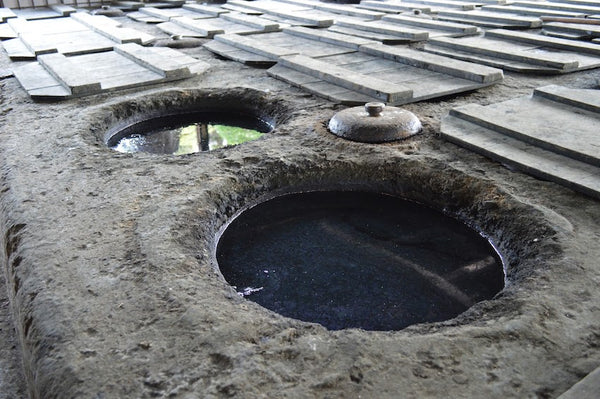China's Growing Influence in Global Dye Production and Market Trends
The State of Dye Production in China
China has established itself as one of the world's largest dye producers, dominating the global market with its extensive manufacturing capabilities, a diverse portfolio of dye products, and a robust supply chain. The dye industry plays a crucial role in various sectors, including textiles, leather, paper, and plastics. As the demand for innovative and environmentally friendly products increases, China's dye production landscape is evolving to meet these new challenges.
Historical Overview
The roots of dye production in China can be traced back thousands of years, with traditional natural dyes derived from plants and insects. However, the modern dye industry began to take shape during the late 19th and early 20th centuries with the advent of synthetic dyes. This transition significantly changed the production processes and expanded the range of colors available, enhancing China’s textile industry, which has long been known for its rich tradition in fabric craftsmanship.
As the global demand for dyes surged, particularly with the rise of the fast fashion industry, China invested heavily in scaling its production capacity. By the 21st century, the country had cemented its status as a global leader, accounting for a substantial percentage of the world's dye exports.
Current Production Trends
In recent years, China's dye production has seen several trends influenced by both domestic and international factors. First, there is an increasing emphasis on sustainability. The environmental impact of dye manufacturing—especially from traditional processes—is significant, leading to severe pollution in local waters and soils. To address these issues, many Chinese dye manufacturers are investing in greener technologies and processes, such as using non-toxic chemicals and recycling water used in production.
Moreover, innovations in dye technology are shaping the industry’s future. Advances in digital printing technologies have changed how dyes are applied, reducing waste and allowing for greater customization. As a result, manufacturers are adapting to these trends to remain competitive. The demand for high-quality, vibrant dyes that can withstand various environmental conditions, such as washing and sunlight exposure, remains high.
Economic Importance
china dye production

The dye industry is a vital part of China's economy. It provides employment to millions, including skilled labor in research and development, production, and logistics. Additionally, it supports other industries like textiles and fashion, which are major contributors to China’s GDP. As a hub for global textile production, the dye industry’s health is intrinsically linked to the performance of these other sectors.
Global Market Dynamics
China's dominance in dye production also influences global market dynamics. With both domestic consumption and international exports, the country plays a crucial role in supplying dyes to various industries across Europe, North America, and other Asia-Pacific nations. However, shifts in trade policies and international relations can impact market access and competitiveness.
Currently, many Western countries are looking to diversify their sources of dyes due to growing concerns about environmental practices in some Chinese factories. Consequently, there is potential for emerging markets in Africa and Southeast Asia to gain ground in dye production, although they currently lag behind China’s established capabilities.
Future Outlook
Looking ahead, the future of dye production in China will likely revolve around innovation and environmental sustainability. As stricter regulations on pollution are implemented, many companies may need to adapt their production processes. The success of this transformation will determine their competitiveness on a global scale.
Additionally, investing in research and development for eco-friendly dyes will likely garner significant attention. Companies that can produce sustainable and high-performance dye solutions may not only thrive domestically but also secure a strong position in the international market.
In conclusion, China’s dye production industry is at a pivotal juncture. With its rich history, economic significance, and potential for innovation, it is crucial for stakeholders to focus on sustainable practices while adapting to the ever-changing global landscape. The choices made today will shape the future of dye production in China and beyond, ensuring its relevance in a world that increasingly values sustainability and quality.
-
The Timeless Art of Denim Indigo Dye
NewsJul.01,2025
-
The Rise of Sulfur Dyed Denim
NewsJul.01,2025
-
The Rich Revival of the Best Indigo Dye
NewsJul.01,2025
-
The Enduring Strength of Sulphur Black
NewsJul.01,2025
-
The Ancient Art of Chinese Indigo Dye
NewsJul.01,2025
-
Industry Power of Indigo
NewsJul.01,2025
-
Black Sulfur is Leading the Next Wave
NewsJul.01,2025

Sulphur Black
1.Name: sulphur black; Sulfur Black; Sulphur Black 1;
2.Structure formula:
3.Molecule formula: C6H4N2O5
4.CAS No.: 1326-82-5
5.HS code: 32041911
6.Product specification:Appearance:black phosphorus flakes; black liquid

Bromo Indigo; Vat Bromo-Indigo; C.I.Vat Blue 5
1.Name: Bromo indigo; Vat bromo-indigo; C.I.Vat blue 5;
2.Structure formula:
3.Molecule formula: C16H6Br4N2O2
4.CAS No.: 2475-31-2
5.HS code: 3204151000 6.Major usage and instruction: Be mainly used to dye cotton fabrics.

Indigo Blue Vat Blue
1.Name: indigo blue,vat blue 1,
2.Structure formula:
3.Molecule formula: C16H10N2O2
4.. CAS No.: 482-89-3
5.Molecule weight: 262.62
6.HS code: 3204151000
7.Major usage and instruction: Be mainly used to dye cotton fabrics.

